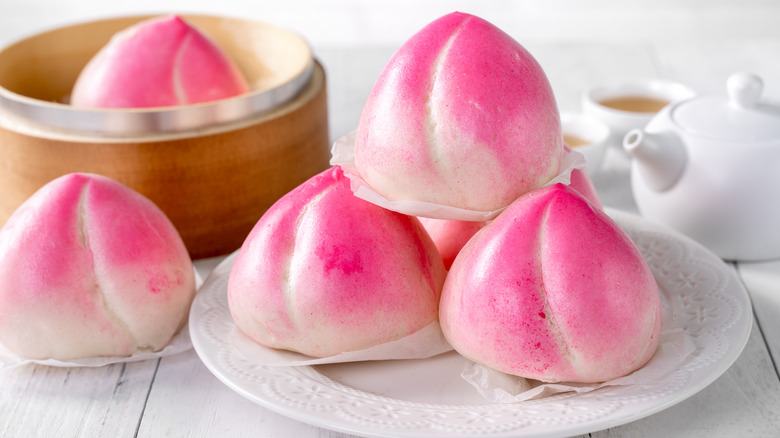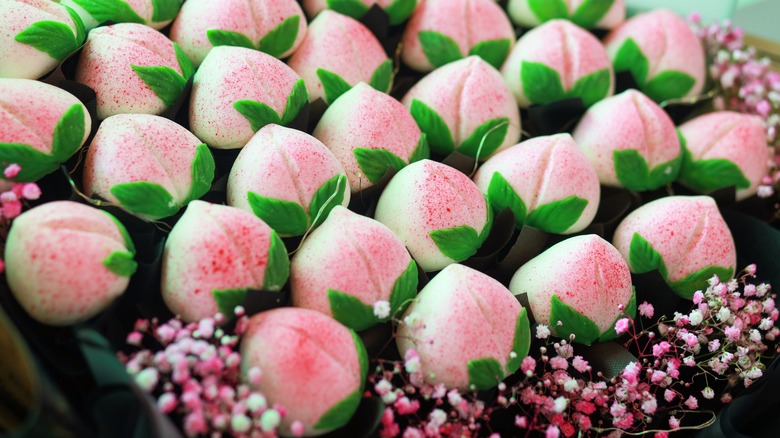The Beautiful Steamed Buns That Represent A Peachy Long Life
In Chinese tradition, birthdays are a time to wish for good luck, happiness, and a long life. For instance, if you're the birthday boy or girl, then you'll usually be presented with a bowl filled with long, unbroken noodles known as "longevity noodles" (chang shou mian). You then have to slurp one up without breaking it, as this represents longevity.
Also typically served on birthdays are "red eggs" — hard-boiled chicken eggs rubbed with wet red calligraphy paper to turn them bright pink (via Charismatic Planet). In Chinese culture, the act of peeling a boiled egg on your birthday stands for a fresh start (via Thought Co), and the egg itself represents birth, fullness, and completeness, while the color red is associated with good fortune. Often, the egg will be eaten for your birthday breakfast, while the longevity noodles will be enjoyed later on at home or in a restaurant where they will be specially prepared (via Cambridge Network).
Of course, just like in many other countries, a birthday cake (dangao) is also essential. Usually, this is a layered sponge with red icing for luck, plus whipped cream and fruit (via The Daily China). Yet a traditional Chinese birthday celebration — particularly for an elderly person — just wouldn't be complete without the inclusion of whimsical "longevity peach buns."
Why longevity peaches are a birthday treat in China
In Chinese culture, peaches are strongly linked to health and longevity. According to Atlas Obscura, it is said that a Taoist goddess, The Queen Mother of the West, grows the peaches of immortality on the mythological Kunlun Shan mountain. Every 3000 years, the fruits ripen, and immortals gather to eat them and regain their youth. In addition, Shou Xing — a god who controls human lifespans — is traditionally shown holding a peach; in fact, longevity peaches (shou tao) are named after him. There is also a legend that a Chinese military strategist, Sun Bin, gave his mother a peach on her 80th birthday, and she miraculously became young again (via South China Morning Post).
Longevity peaches call to mind these stories by giving people their own version of the miracle fruits. As explained by CBC Kids, longevity peaches probably came about because peaches aren't always in season, but a sweet bun serves as a replacement. These Cantonese birthday treats are fashioned to look like peaches and are basically steamed buns made from white dough with a soft, bouncy texture. Inside, you'll usually find a sweet and creamy filling of custard, red bean paste, or lotus seed paste. While there are no actual peaches in the ingredients, the buns have a pink blush coloring and a creased line to give them the appearance of the fruit. Green leaves are usually added too — sometimes by stenciling or with artificial greenery.
Nowadays, Cantonese bakers are getting more creative with this celebration treat, including crafting peach-shaped birthday cakes or making volleyball-sized versions with miniature buns stashed inside (via CBC Kids). It just goes to show that while tradition is still important on Chinese birthdays, this particular one can now be presented with a contemporary twist.

